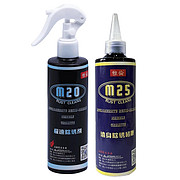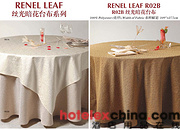
ANAHEIM, Calif. — The 32nd RCI International Convention and Trade Show will be held March 16 to March 21, 2017 at the Hilton in Anaheim. The convention offers industry experts the chance to participate in educational seminars, live product demonstrations and a two-day trade show with over 140 exhibitors.
One of the major focal points of the RCI International Convention is offering continuing education courses and credits for those who attend. Simply by being present at the convention, all registered attendees will receive Continuing Educational Hours (CEHs) based on how much time they spend at educational programs presented by the trade show. Attendees will earn 2.0 CEHs for spending up to four hours on the trade show floor. Attendees who spend more than four hours on the trade show floor will receive 3.0 CEHs.
Besides receiving CEHs, attendees can participate in educational seminars geared toward sharing knowledge and expanding perceptions surrounding sustainable design. One seminar being presented at the trade show is called Reflective Roofing Research: Influence of Roof Color on Adjacent Air and Surface Temperatures, presented by Elizabeth Grant, an associate professor at Virginia Tech’s school of architecture and design.
The presentation is a result of an experimental study performed at the Center for High Performance Environments at Virginia Tech. As a result of the study, Grant found statistical differences between temperatures above and adjacent to white versus black roofs.
“My students and I instrumented black EPDM (ethylene propylene diene terpolymer) and white TPO (Thermoplastic polyolefin) roof surfaces, the air above them, the metal conduits above them, and adjacent opaque and glazed walls to see the effect of roof surface color on temperatures at these locations,” said Grant.
Grant’s presentation promoted green design and sustainability by challenging the notion that white, reflective roofs are a one-size-fits-all answer to make buildings more energy-efficient. According to Grant, there are buildings or portions of buildings, where white roofs might not be the optimal choice due to the adverse effects of reflecting solar energy where it’s not needed or wanted.
Her study strives to help the sustainable roofing community because, according to Grant, the roofing community is in need of statistically analyzed data from experimental studies located in realistic field conditions.
“Others can take our results and use them to verify computer models that anticipate energy flows through different surfaces of buildings, and to understand how air and mechanical and electrical equipment temperatures are affected above different roof surfaces,” said Grant.
While the RCI International Convention doesn’t start until March, it’s likely that Grant’s presentation will encourage roofers and builders to institute sustainable principles in the projects they complete in the future.










Service Hotline
Work Time:Mon-Fri 9:00-18:00
UTC+8

Sinoexpo Digital Platform
Copyright 2006-2024 Shanghai Sinoexpo Informa Markets International Exhibition Co., Ltd. All rights reserved
沪ICP备05034851号-77
 沪公网安备 31010402000543号
沪公网安备 31010402000543号